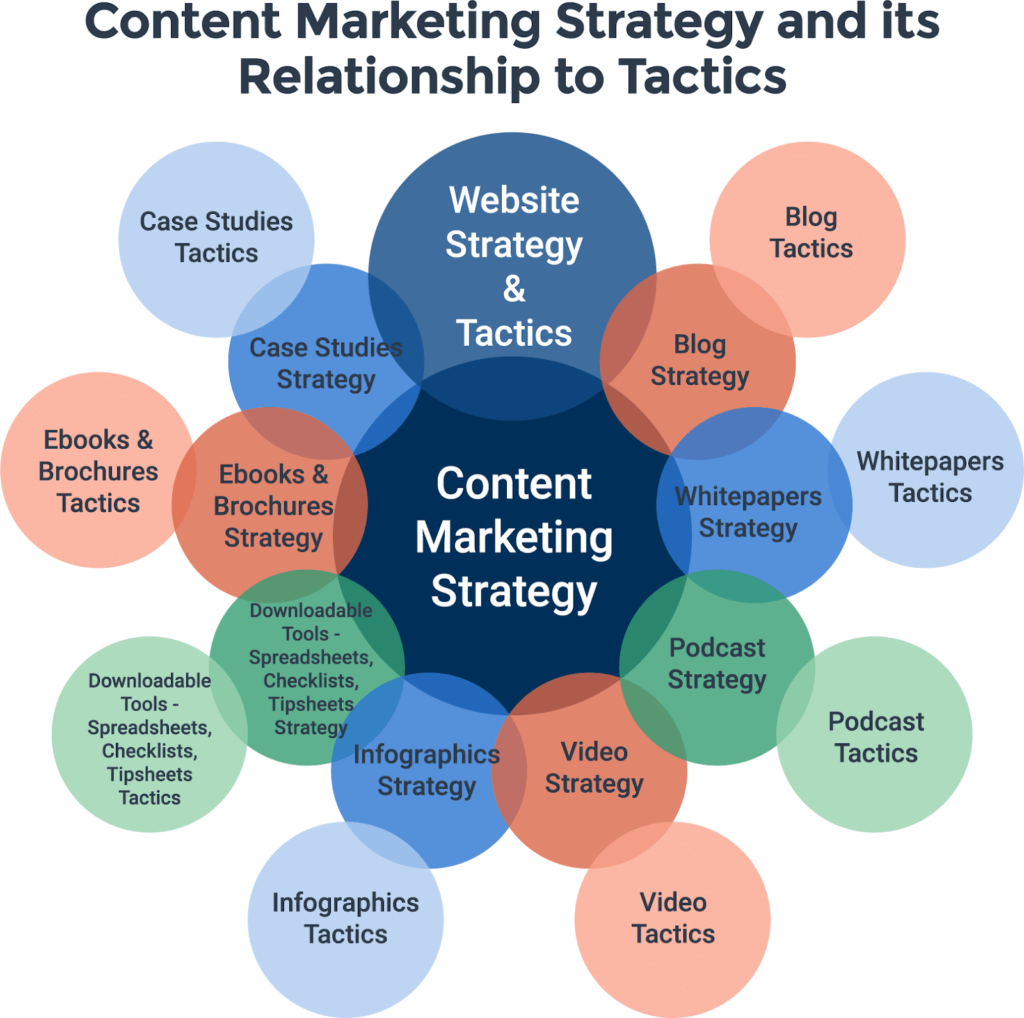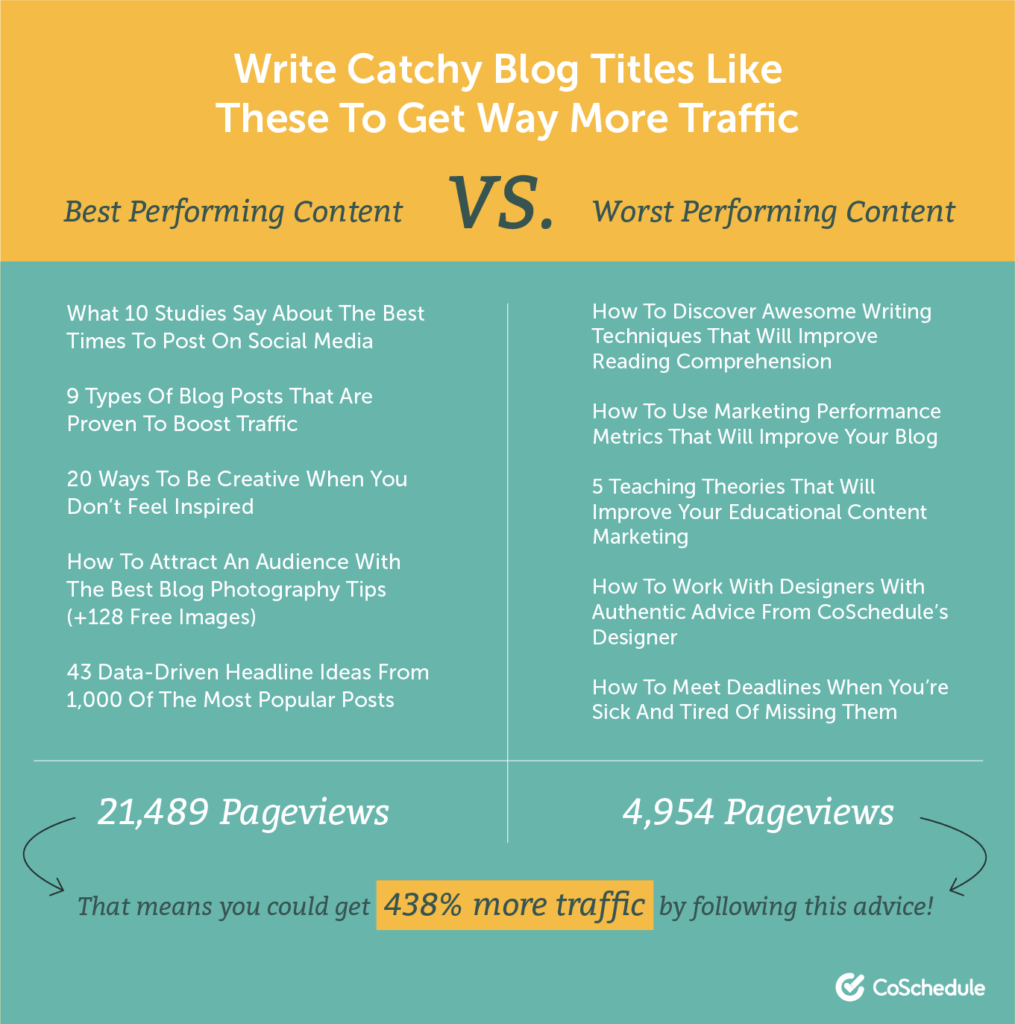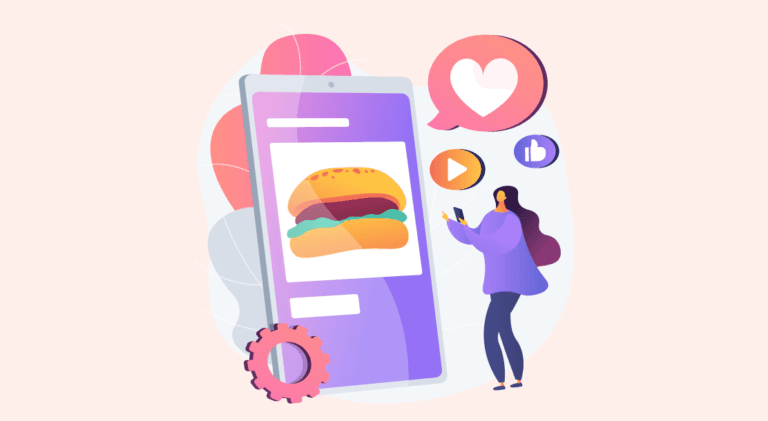16 Steps To Improve Your Blog Traffic Using Content Strategy

Table Of Contents
- Types Of Blog Traffic
- The Importance Of Content Strategy In Driving Traffic
- 16 Ways To Drive Traffic To Your Blog
- Key Takeaways
- Conclusion
- FAQs
Let’s start with the facts. According to Hubspot, you are 13 times more likely to reap a positive return on your investment when you prioritize blogging. In fact, blogging is responsible for far more traffic on your website than regular advertisements. With the help of SEO optimization and keyword research, your blog reaches far more people. However, if you are facing issues with a lack of traffic to your blog, don’t rush to give up just yet. Instead, focus on how to improve blog traffic to your website. There are several ways by which you can drive traffic to your blog. But probably the most effective one is content strategy.
Strategizing the content you put out on your blog will significantly help increase the traffic you receive. A content strategy allows you to have a plan in place, which will directly drive engagement. Based on research by Hubspot, blogging regularly attracts 55% more website visitors. Simply put, as long as your content is engaging and you choose a subject of significant interest to your potential audiences, the traffic to your website is bound to increase.
Types Of Blog Traffic
There are two types of blog traffic. Organic traffic is the kind you get when your potential audience searches for specific keywords on the Google – or any other – search engine. When your blog appears in the search results, they click on it organically. Organic traffic can also be referral in nature, where instead of searching for a topic, they find your blog courtesy of another website. This website has ideally linked and referenced your article. Paid traffic is the second kind, where the blog owner uses advertisements to guide people to the blog. You could do this via Facebook ads, Twitter ads, Google AdWords, and the likes.
If you want to sustain the traffic you get, it becomes necessary to generate organic traffic for your website consistently. This is where content strategy plays a significant role.
The Importance Of Content Strategy In Driving Traffic

1. Helps set and reach goals
When you are looking to improve the quantity and quality of your blog’s traffic, you need to make sure you don’t go chasing ideas you cannot achieve. Futile efforts that waste your time, money, and energy need to be avoided as far as possible. So, you need to make sure you are not making basic mistakes.
This could include creating content that doesn’t work for your target audience. Or, perhaps you create content for keywords that are far too competitive instead of going for the ones that are easier to reap results from.
Opting to have a blog content strategy will help you set prioritized goals that you can achieve. Once you have crafted said content strategy, you can plan out the work beforehand and ensure that all the resources are spent to achieve pre-established goals. This will help you know where you are going and give you the wherewithal to ensure that every effort made achieves tangible results.
2. Helps track progress
Suffice to say, setting a goal will help you understand your progress. Goals – whether long- or short-term in nature – can help measure how effective your blog content strategy is.
A good blog content strategy should also focus on tracking as well as analyzing your progress to determine whether the stratagem you’ve opted for or the marketing efforts you’ve initiated are worthwhile. If they are not helping you reach your pre-established goals, your strategy and goals will need to be changed entirely or reworked to suit your blog better.
3. Helps identify new opportunities
You cannot be a successful content marketer unless you look for newer and more topical content creation opportunities. Creating content on relevant, fresh, and trending topics is how you can drive traffic to your blog.
The most efficient way to do all this is to have a strong blog content strategy that outlines the various methods you could use to find new trends and stories and more unique ideas. Lack of a content strategy will lead to disaster. Your search for new content opportunities will have no base and could be uncoordinated enough to drive away your pre-existing readership. It could also harm your brand voice, as lack of planning could make you lose focus of what your brand represents to your readers.
4. Helps cut costs
There is absolutely no doubt that content creation and distribution are relatively costly. Without a content strategy to guide you, you are more likely to lose sight of what exactly you wish to say. Marketers often make the mistake of spending too much on unnecessary projects in a rush to drive more traffic to their blog or perhaps to make themselves more marketable. However, this will always end up with you having minimal funds to work with later on in the financial year.
As it is with most things in life, having a strategy in place helps you navigate this problem significantly easier. A good blog content strategy will help you decide where you should and should not be investing your money. If done well enough, it will also help you cut costs as you will know precisely what you are working up to.
5. Helps optimize your marketing team
When you have a marketing team, you need to be able to give them something tangible to work with to make sure their efforts do not all go to waste. Without a solid blog content strategy, your marketing team won’t know what content needs to be produced, for which platform, or how that content needs to be reshaped and recycled. This will even impact the day-to-day tasks. And your team of savvy marketers, who could have been key assets for your company, will be directionless.
Once you set an end goal that needs to be achieved that your team needs to work towards, your marketing team will have a much easier time working towards achieving it. With the help of the best content strategy, they will be able to set up a concrete work schedule for content creation, some guidelines on how to manage the social media accounts, and even the day-to-day mundane stuff. Planning out a content strategy is the best blog traffic tip you can get.
6. Helps produce content that converts
The most valuable part of having a good content strategy is that it allows you to create content that converts. Because of this, you will produce content that will reap a significant amount of benefit and drive up the traffic your blog receives as long you keep these critical aspects in mind.
- Your target audience and what they like
- The voice of your brand
- The style and formatting of each type of content you create
- The channels you use for distribution and promotions
You will have built a solid foundation for your content strategy with these set in stone. This will help you significantly increase traffic to your blog in the long run.
16 Ways To Drive Traffic To Your Blog

1. Look for the ideal writer

Let’s start with the essential, most straightforward tip on how to increase your blog traffic — well-written content. Create content that feels human instead of something that a content farm generated. The human element will engage the reader. So, it is necessary to find creators who write well, know their subject matter, and are passionate about both.
If the writer, which could even be you, can convey knowledge of a topic that they have researched extensively, without jargon and with some personality, they are likely to be favored by readers. Monotonous information is never engaging enough for people to want to return to your website. A good writer will absorb all the knowledge and divide it up into bite-size pieces for your readers to consume.
While this seems like a reasonably simple task, it is not. Good writers are not that easy to come by, so keep them close if you find them.
2. Focus on using keyword research to identify good topics for your blog post
It’s pretty easy to write lengthy, long-form content on topics no one knows about. Similarly, writing lengthy, long-form content on topics – that people want to read – without the ideal keywords will not make the content marketable.
Keyword research is crucial to writing content that will boost traffic to your blog. Using tools like SEMrush or Moz, you need to find the keywords that work along with your current topic. Keywords allow for your blog to show up on search engines more frequently.
Once you have found the keywords you need for the topic you wish to create content on, it becomes essential to place those keywords in ideal places within your blog post. Keyword research helps you boost your SEO, which makes your content more desirable for Google to pick up on. These things need to be kept in mind while creating content. But sometimes, they do slip your mind, and that’s where content strategy comes into play. The best content strategy on how to increase blog traffic will take into account the best keywords. So, ensure you create content on exciting and marketable topics.
3. Create as much long-form content as you can
According to an article by Neil Patel, ‘long-form content’ performs better in search results than short or ‘thin’ posts. Long-form content is nothing but blog posts that are not just long in terms of the number of words but are also significantly more in-depth with the information they impart. Long-form content is a deep dive into a specific topic that has been known to do very well with the audience.
Due to the more prolonged nature of the post, there will naturally be more keywords in the post itself, which would lead to the blog popping up in the search results for ‘long tail’ keyword searches. This means you tap a whole new market that you hadn’t been able to with a short-term content format.
Moreover, the lengthy and in-depth content produced is likely to educate the reader significantly more. More often than not, when researching a topic, you learn a lot about it. This knowledge has to be cut down and edited to fit the short-term content format. This means that a lot of information doesn’t make it to the reader – a lot of which could be pretty significant.
This extra care of providing ample information with longer blog posts impresses the readers more, which, in turn, results in them sharing the blog posts on their social media accounts. However, it remains essential not to overdo it. If you extend the length of your article purely to fit into the format but lack the substance, it will result in alienating your readers altogether.
4. Refresh your content with constant updates
A mantra repeated repeatedly with blogging and SEO is that the fresher the content, the better it performs. Now, when you first come across this information, you might feel inclined to spend more time producing newer content that is fresh to appeal to newer audiences. However, this would be a mistake.
This would exhaust too much energy while not reaping worthy results. It would be much smarter for you to update the existing content you have on your blog. Do more research on the topics, add new keywords, and revise the blog post’s information to remain relevant despite the published date or when the reader finds it. Do it as often as possible. This is an easier, more efficient way of keeping things fresh. It allows you to put significantly less effort into creating entirely new blog posts while also creating relevant content for search engines and consumption by the readers.
Moreover, this doesn’t just send the ‘freshness’ signal to Google but also results in an increase in the length of the post with a higher word count. It could also result in your short-form content becoming long-form, which would help it perform much better in search results.
5. Visuals always help more than you think
According to an article in Visme, people remember 65% of the information they see in visuals, while information retention with visuals goes up by 78%. You aren’t doing it right if you are not using enough visual stimuli with your blog post. Visuals such as infographics or even basic images grab more attention from the viewer than written information. Strong images help the viewer understand in a short glance precisely what you are trying to say with your blog post. The images you put are the first and quickest impression you make on your reader.
Moreover, they improve blog traffic by showing up on social media if your readers share your content. You can even optimize these images by adding suitable keywords to a picture ‘alt text’, file, name, or caption. It makes your post more appealing for the search engine while giving a clearer idea of what your blog post is truly about.
Visuals also give more credence to your blog post, making it seem more reliable and more professional, which always appeals to the readers. But, remember to keep an eye on the file size you use while also ensuring you are only using images you are allowed to. If you are taking an image off another website, don’t forget to credit the source clearly.
6. SEO is an absolute must
You can optimize your content in different ways. On-page SEO (or on-site SEO) is the practice of optimizing web pages using specific keywords, which in turn help improve search visibility and traffic on that blog post. So, the best way to utilize it is as follows:
- Create blog post headlines that reflect your keyword research and accurately describe what your post is about.
- Remember to include the keywords you have researched and summarise your content in the URL for each post.
- Your headlines should ideally be keyword-rich (H1, H2, H3, H4, etc.) and help break up content.
- Optimize the alt text, captions, and file names for your images by including keywords.
Then comes ‘technical SEO’. Technical SEO refers to optimizing a website and the server to help search engines find your website and index it quickly and efficiently. The ideal way to use these are as follows:
- Use small image files in the blog post.
- Ensure that the page doesn’t have any unnecessary script.
- Register your site with Google Search Console.
7. Try to capture email addresses
An essential blog traffic tip is to capture the email address of the person(s) reading your blog post. Once you have grabbed their attention with the help of your headline and images, you need to be able to get their email address as that will allow you to send them e-newsletters informing them about a new blog update.
The best way to go about this is to have a pop-up box on your website that states the advantages of signing up for your e-newsletter. It works much better than just asking them to sign up. You need to provide a place to fill out their email address. It’s more active and encourages more people to act on it.
8. Promote social sharing
Encouraging your readers to share your blog posts on their social media accounts is crucial for content strategy. Whether it be on Facebook, Twitter, Instagram, or the likes, sharing blog posts will increase traffic. More people will want to engage with your content when recommended to them by their peers on social media platforms. According to an article in Forbes, social media now drives 31% of all referral traffic. So, make sure you use it to your advantage.
9. Persuade your reader to comment and engage
You need to encourage your reader to share their own opinions at the end of the article. It creates more keyword-rich content on your page, which is always ideal for Google search results. Commenting and engagement also encourage the viewer to revisit your site. The comment section is at the end of the article: this placement means that the reader is more likely to make it to the end if they intend to leave a comment. Encouraging them to engage will make it more likely that they stay on the page longer and reach the end of the post.
10. Backlinks are your helpers
This might be the most challenging thing on the list. Getting other websites to backlink your blog post is a reasonably tricky task. No one would want to divert their readers’ attention to a competitive site or even away from their location in general. The whole thing becomes a sort of online PR campaign. You need to make connections that you can exploit to get them to backlink your website.
While you might think backlinks mess with your engagement time, it is necessary to use them; after all, the use of backlinks is a reciprocal practice. The more backlinks you use, the more likely you will get someone to use your website for their backlinks. This helps drive a whole new audience your way, making it an essential part of getting traffic on your blog.
11. Don’t forget to boost your posts
It is necessary to utilize a combination of organic and paid traffic to have the ideal amount of traffic directed to your website. While organic traffic is sure to keep the traffic coming your way for a long time, paid traffic does have an expiry date. But, that doesn’t mean you cannot utilize them in tandem.
When you upload new content to your blog, you can leverage paid traffic by driving it towards your latest post. The mixture of organic and paid traffic along with the traffic you must attract from your mailing list should result in a boost in engagement.
12. Reuse your old content without shame
It is not necessary to create new content all the time. Sometimes, the smart thing to do is to repackage your old content to make it more attractive for the reader.
This, while cutting down the effort you put in, is also far more efficient. The content you have written before already has the necessary keyword research and SEO. If you repackage it into something more appealing for the reader, you will have created a new post with minimum effort and maximum efficiency.
13. Study your competitors
Utilize tools like BuzzSumo and Ahrefs and scope out what exactly does and does not work in the field where you are currently producing content. Once you get an idea of the kind of successful content your competitors are creating, start finding a way to make content in a similar vein.
You will better understand what you need to focus more on for creating the best content strategy when this information is available at your disposal.
14. Rework your headlines
This one is pretty self-explanatory. Make sure that the headline you come up with is as attention-grabbing as possible. The headline is the first thing readers see; they will not click on it if it doesn’t capture their attention. The better headline, the more traffic it attracts.

15. Give readers what they want
Always remember that you are writing for your readers. While you might be tempted to change your style and content from time to time, do not alienate your readership. The people who visit your site regularly are the ones that are sure to stick by you for the longest; do not take them for granted.
Even if you wish to try out new things, produce content more in line with your usual style for your base readers. Take into account what they want based on their emails and comments, and give them what they want.
16. Stick to a posting schedule
Consistency is critical, especially when you are new. If you have just started, you need to post consistently and stick to a schedule. It is not only a way of producing good content regularly, but it also is an excellent way to encourage readers to keep coming back time and again. If they know that a new post goes up, say, every Wednesday, they will check in that day to see what’s new. It might seem like a small thing, but it helps more than you’d think.
Key Takeaways
- Content strategy is crucial to increasing the flow of traffic to your site. Setting goals and noting the progress made helps assess success more accurately.
- The optimization of content can help you cut costs with its efficiency.
- Boosting traffic to blog posts takes significant research of your competition, the topic at hand, and the keywords.
- Engage your viewers with visuals, asking them to comment and share.
- Catchy headlines, reusing old content, and posting regularly might seem like small measures, but they yield significant results.
Conclusion
So, here is how to improve blog traffic: focus on your content, get good writers, research everything you can and have a good content strategy in place. Once you have utilized all the suggestions given above, you will not want to get rid of your blog due to a lack of traffic. It might seem a little tricky at first, but at the heart of it all needs to be the drive to create content that is good for the reader to consume. The rest of these elements are relatively easy to achieve if you have that sorted.

FAQs
You can use tools like SEMrush and Moz to track the traffic on your website.
You have to not only create better content but do so more frequently to rank higher than your competition. Remember to use ample keywords and optimize the content as best as possible.
Yes, SEO will help with the ranking and traffic to your website, as it will help your blog show up more prominently when related topics are searched.
SEO helps make your blog post more visible to search engines, which helps drive more traffic to your website.
The benefit of content strategy is that you are able to set goals and a solid foundation based on which you can create content.
Buffer and Hootsuite are tools that track social media traffic. They also provide reports on followers, likes, shares, and comments.
Latest Blogs
Explore how Google’s 2025 AI search updates triggered ranking chaos. Learn actionable strategies to adapt your SEO for AI Overviews, zero-click searches, and SERP volatility. Stay ahead now.
Learn how to rank on AI search engines like ChatGPT, Perplexity, and Gemini by optimizing your content for authority, structure, and relevance. Stay ahead in AI-driven search with this strategic guide.
Explore the best healthcare SEO services for your medical practice. Improve online visibility and effectively reach more patients in need of your services.
Get your hands on the latest news!
Similar Posts

Content Analytics
8 mins read
Google I/O 2025: AI Search Shake-Up & Ranking Volatility

Artificial Intelligence
5 mins read
Top AI Blog Writing Tools for Website Monetization

Blogging
10 mins read